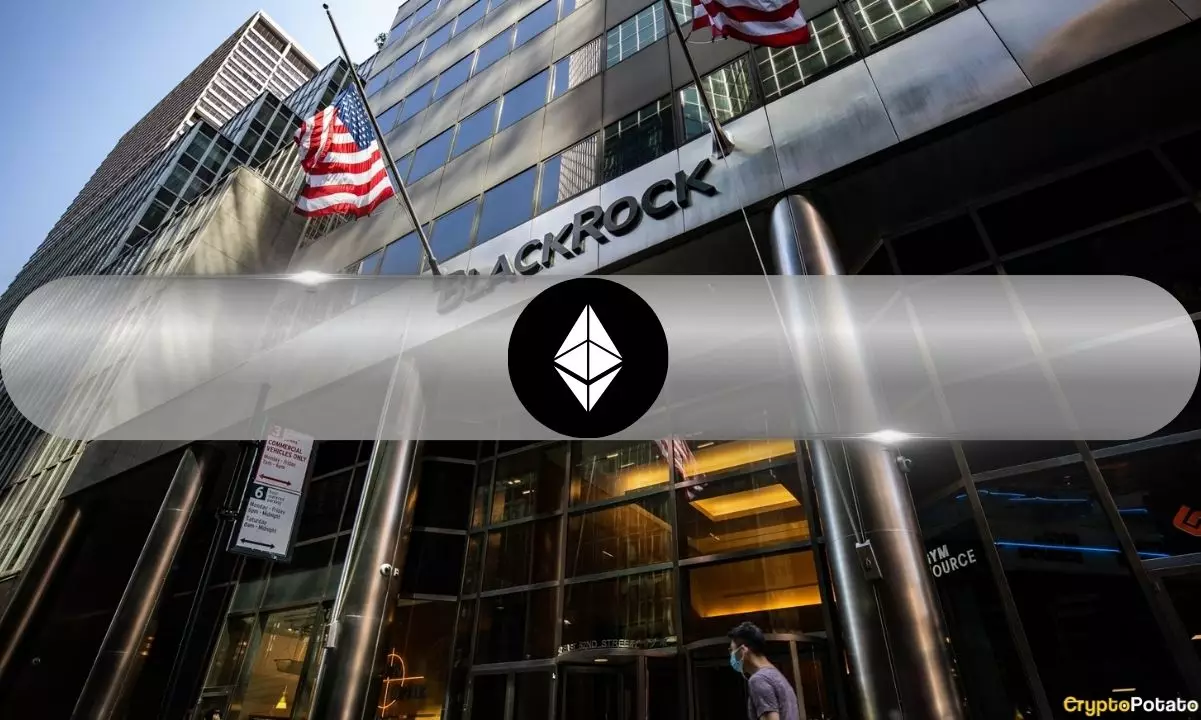In a world where capital flows and investment paradigms are rapidly changing, BlackRock’s recent move to tokenize its $150 billion Treasury Trust Fund represents not just a financial strategy, but a landmark shift in how we view asset management. The comment by Eric Connor, former Ethereum developer, encapsulates the sentiment surrounding this monumental event. This isn’t merely another piece of news; it signifies an acknowledgment of blockchain’s growing legitimacy in traditional finance. BlackRock is not just dabbling in Ethereum; they are banking on it as the backbone of a new era in asset management, and it brings a wealth of implications.
The Duality of Opportunity and Risk
While the excitement is palpable among crypto advocates, a stark reality must be acknowledged: the volatility of Ethereum itself. Despite being the industry leader in real-world asset (RWA) tokenization with a 56% market dominance, Ethereum is presently ensnared in a bear market. The price fluctuations, from hovering below $1,800 to remaining 63% off its 2021 peak, prompt questions of sustainability. Investors are venturing into tokenized assets in droves, yet they do so with an undercurrent of caution. The allure of immediate liquidity and reduced transaction times, as espoused by BlackRock’s CEO Larry Fink, is attractive but must be weighed against the technological and regulatory risks that perpetually loom over cryptocurrencies.
A Community on the Brink of Validation
One cannot overstate the importance of institutional validation for Ethereum. With 93% of BlackRock’s USD Institutional Digital Liquidity Fund (BUIDL) based on this blockchain, it’s clear that the ecosystem has not only attracted interest but also trust from one of the largest asset managers in the world. This could usher in a new wave of investor confidence, which has been notoriously elusive in the crypto space. The potential for ETH to transition from being primarily a speculative asset to a trusted instrument of institutional investing marks a sea change in perception. However, these developments invite scrutiny: is this mere speculation dressed up as stability?
Tokenization as the Future of Investing
Larry Fink’s assertion that tokenization can revolutionize investing is not merely hyperbole. With blockchain technology promising to reduce transaction times from days to seconds, the implications for capital liquidity and trading activity in broader markets are transformative. If BlackRock succeeds in leveraging the efficiencies of Ethereum’s infrastructure, it could pave the way for more widespread adoption across various sectors beyond finance. The current stagnation in ETH prices, even amid this positive news cycle, emphasizes the disconnect that can sometimes exist between market sentiment and actual utility. The broader financial markets will need to adapt rapidly for tokenization to become a sustained trend.
The Need for Strategic Caution
As BlackRock’s market maneuvers draw attention, it also raises questions about the potential regulatory backlash. The power dynamics in traditional finance could react negatively to rapid changes, leading to potential constraints on blockchain technology. If Ethereum and its tokenized assets flourish, other sectors may feel threatened, and regulatory measures could shift dramatically. The cryptocurrency community must stay vigilant, questioning whether this institutional embrace is genuinely beneficial for long-term growth or if it serves the purposes of a select few within broader capital markets.
The intersection of massive institutional interest in Ethereum and the precarious state of the asset itself requires nuanced consideration. The move toward tokenization symbolizes tremendous potential but also fraught risks. Improvement in Ethereum’s liquidity and operational efficiency through tokenization may not merely revolutionize investing but might also redefine the entire finance industry. The journey of Ethereum is not merely about inflated crypto prices; it’s about navigating a brave new financial landscape with awareness and discernment. As we watch this saga unfold, one thing is clear: the stakes have never been higher, both for Ethereum and the markets that are willing to embrace blockchain solutions.


Leave a Reply